Filter by

Transcriptional Profiling of Malaria-exposed Mosquitoes: a Comparative Analys…
Malaria, caused by Plasmodium parasites and transmitted by Anopheles mosquitoes, is a significant public health issue, particularly in South and Southeast Asia where Plasmodium vivax is prevalent. Understanding the genetic factors influencing mosquito susceptibility to P. vivax is crucial for developing targeted malaria control and eradication strategies. Building on previous findings that …
- Edition
- -
- ISBN/ISSN
- -
- Collation
- -
- Series Title
- -
- Call Number
- BM 24-021

Dedikasi untuk negeri 2023
- Edition
- -
- ISBN/ISSN
- -
- Collation
- 246 p. : ill. ; 27 cm.
- Series Title
- -
- Call Number
- 339.5 Ban d
- Edition
- -
- ISBN/ISSN
- -
- Collation
- 246 p. : ill. ; 27 cm.
- Series Title
- -
- Call Number
- 339.5 Ban d

Development of a Digital Genomic Advisor using React and Next.js Frameworks t…
The healthcare industry has undergone a remarkable transformation in recent years due to technological advancements and digitalization. To address the need for accessible genomic healthcare information, GNOMED (Genomics Education) has been developed, a web application empowering patients with comprehensive reports from authorized genomic experts. Utilizing a rapid application development (R…
- Edition
- -
- ISBN/ISSN
- -
- Collation
- -
- Series Title
- -
- Call Number
- BI 24-005

Dedikasi untuk negeri 2022
- Edition
- 2022
- ISBN/ISSN
- -
- Collation
- 248 p. : ill. ; 27 cm.
- Series Title
- -
- Call Number
- 339.5 Ban d
- Edition
- 2022
- ISBN/ISSN
- -
- Collation
- 248 p. : ill. ; 27 cm.
- Series Title
- -
- Call Number
- 339.5 Ban d

Indonesia economic review: ASEAN matters: epicentrum of growth
- Edition
- July 2023
- ISBN/ISSN
- -
- Collation
- 94 p. : ill. ; 30 cm.
- Series Title
- -
- Call Number
- 330.015195 Ind
- Edition
- July 2023
- ISBN/ISSN
- -
- Collation
- 94 p. : ill. ; 30 cm.
- Series Title
- -
- Call Number
- 330.015195 Ind

Dedikasi untuk negeri 2021
- Edition
- -
- ISBN/ISSN
- -
- Collation
- 245 p. : ill. ; 27 cm.
- Series Title
- -
- Call Number
- 339.5 Ban d
- Edition
- -
- ISBN/ISSN
- -
- Collation
- 245 p. : ill. ; 27 cm.
- Series Title
- -
- Call Number
- 339.5 Ban d

Mapping natural product diversity through genomics
- Edition
- -
- ISBN/ISSN
- 9789463957564
- Collation
- 204 p. : ill. ; 24 cm.
- Series Title
- -
- Call Number
- 572.86 Kau m
- Edition
- -
- ISBN/ISSN
- 9789463957564
- Collation
- 204 p. : ill. ; 24 cm.
- Series Title
- -
- Call Number
- 572.86 Kau m

Macroeconomics sixth edition
- Edition
- Sixth edition
- ISBN/ISSN
- 9780273766339
- Collation
- 573 p. : ill. : ind. ; 25 cm.
- Series Title
- -
- Call Number
- 339 Bla m
- Edition
- Sixth edition
- ISBN/ISSN
- 9780273766339
- Collation
- 573 p. : ill. : ind. ; 25 cm.
- Series Title
- -
- Call Number
- 339 Bla m

How to fail at almost everything and still win big : kind of the story of my …
- Edition
- -
- ISBN/ISSN
- 9780241003701
- Collation
- 248 p. : ill. ; 24 cm
- Series Title
- -
- Call Number
- 741.5/6973 Ada h
- Edition
- -
- ISBN/ISSN
- 9780241003701
- Collation
- 248 p. : ill. ; 24 cm
- Series Title
- -
- Call Number
- 741.5/6973 Ada h

Lactic acid bacteria in food biotechnology : innovations and functional aspects
- Edition
- -
- ISBN/ISSN
- 9780323898751
- Collation
- xi, 370 p. : ill. : ind. ; 24 cm.
- Series Title
- -
- Call Number
- 579.135 Lac
- Edition
- -
- ISBN/ISSN
- 9780323898751
- Collation
- xi, 370 p. : ill. : ind. ; 24 cm.
- Series Title
- -
- Call Number
- 579.135 Lac

Principles of microeconomics 2nd edition
- Edition
- Second edition
- ISBN/ISSN
- 9780170106405
- Collation
- xxxii, 504 p. : ill. : ind. ; 28 cm.
- Series Title
- -
- Call Number
- 338.5 Gan p
- Edition
- Second edition
- ISBN/ISSN
- 9780170106405
- Collation
- xxxii, 504 p. : ill. : ind. ; 28 cm.
- Series Title
- -
- Call Number
- 338.5 Gan p

Business Statistics Using Excel
- Edition
- -
- ISBN/ISSN
- 9789354791567
- Collation
- xxxv, 648 p. : ill. : ind. ; 25 cm.
- Series Title
- -
- Call Number
- 330.015195 Pan b
- Edition
- -
- ISBN/ISSN
- 9789354791567
- Collation
- xxxv, 648 p. : ill. : ind. ; 25 cm.
- Series Title
- -
- Call Number
- 330.015195 Pan b

Applied statistics : business and management research
- Edition
- -
- ISBN/ISSN
- 9781473947450
- Collation
- xvi, 438 p. : ill. : ind. ; 25 cm.
- Series Title
- -
- Call Number
- 519.5 Tim a
- Edition
- -
- ISBN/ISSN
- 9781473947450
- Collation
- xvi, 438 p. : ill. : ind. ; 25 cm.
- Series Title
- -
- Call Number
- 519.5 Tim a

Dedikasi untuk negeri 2020
- Edition
- -
- ISBN/ISSN
- -
- Collation
- 251 p. : ill. ; 27 cm.
- Series Title
- -
- Call Number
- 339.5 Ban d
- Edition
- -
- ISBN/ISSN
- -
- Collation
- 251 p. : ill. ; 27 cm.
- Series Title
- -
- Call Number
- 339.5 Ban d

Dedikasi untuk negeri 2019
- Edition
- -
- ISBN/ISSN
- -
- Collation
- 277 p. : ill. ; 27 cm.
- Series Title
- -
- Call Number
- 339.5 Ban d
- Edition
- -
- ISBN/ISSN
- -
- Collation
- 277 p. : ill. ; 27 cm.
- Series Title
- -
- Call Number
- 339.5 Ban d

Essentials of pharmacoeconomics : health economics and outcomes research
- Edition
- -
- ISBN/ISSN
- 9781975139445
- Collation
- xvii, 360 p. : ill. : ind. ; 25 cm.
- Series Title
- -
- Call Number
- 615.1 Ras e
- Edition
- -
- ISBN/ISSN
- 9781975139445
- Collation
- xvii, 360 p. : ill. : ind. ; 25 cm.
- Series Title
- -
- Call Number
- 615.1 Ras e

Pharmacoeconomics: From Theory to Practice
In this era of finite budgets, healthcare rationing, medication shortages, and the global aging and burgeoning of populations, numerous stakeholders in the healthcare arena must understand the basic principles of pharmacoeconomics and how these may be correctly applied to facilitate drug development, rationing, patient segmentation, disease management, and pricing model development. Pharmaco…
- Edition
- -
- ISBN/ISSN
- 978-1138589834
- Collation
- -
- Series Title
- -
- Call Number
- 615.1 ARN p
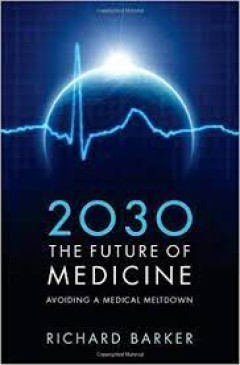
2030, the future of medicine : avoiding a medical meltdown
- Edition
- -
- ISBN/ISSN
- 9780199600663
- Collation
- x, 118 p. : ill. : ind. ; 20 cm.
- Series Title
- -
- Call Number
- 610.1 Bar t
- Edition
- -
- ISBN/ISSN
- 9780199600663
- Collation
- x, 118 p. : ill. : ind. ; 20 cm.
- Series Title
- -
- Call Number
- 610.1 Bar t
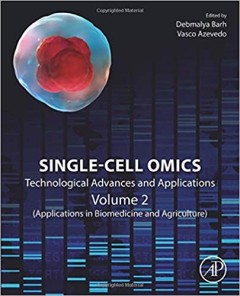
Single-cell omics : technological advances and applications volume 2 (applica…
- Edition
- -
- ISBN/ISSN
- 9780128175323
- Collation
- xxii, 361 p. : ill. : ind. ; 24 cm.
- Series Title
- -
- Call Number
- 570.285 Sin
- Edition
- -
- ISBN/ISSN
- 9780128175323
- Collation
- xxii, 361 p. : ill. : ind. ; 24 cm.
- Series Title
- -
- Call Number
- 570.285 Sin

Handbook in economics : economics of marketing volume 1
- Edition
- Volume 1
- ISBN/ISSN
- 9780444637598
- Collation
- xix, 611 p. : ill. : ind. ; 24 cm.
- Series Title
- -
- Call Number
- 330 Han
- Edition
- Volume 1
- ISBN/ISSN
- 9780444637598
- Collation
- xix, 611 p. : ill. : ind. ; 24 cm.
- Series Title
- -
- Call Number
- 330 Han
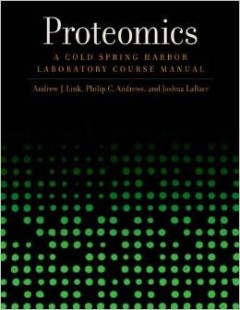
Proteomics : advances in research and applications
- Edition
- -
- ISBN/ISSN
- 9781536164404
- Collation
- vi, 123 p. : ill. : ind. ; 24 cm.
- Series Title
- -
- Call Number
- 572.6 Pro
- Edition
- -
- ISBN/ISSN
- 9781536164404
- Collation
- vi, 123 p. : ill. : ind. ; 24 cm.
- Series Title
- -
- Call Number
- 572.6 Pro
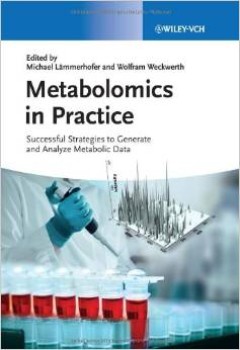
Metabolomics in practice : successful strategies to generate and analyze meta…
Unlike other handbooks in this emerging field, this guide focuses on the challenges and critical parameters in running a metabolomics study, including such often-neglected issues as sample preparation, choice of separation and detection method, recording and evaluating data as well as method validation. By systematically covering the entire workflow, from sample preparation to data processing, …
- Edition
- -
- ISBN/ISSN
- 9783527330898
- Collation
- xxv, 415 p. : ill. : ind. ; 25 cm.
- Series Title
- -
- Call Number
- 572.8 Met

Economics sixth edition
- Edition
- Sixth Edition
- ISBN/ISSN
- 9780993133107
- Collation
- iv, 667 p. : ill. : ind. ; 28 cm.
- Series Title
- -
- Call Number
- 330 And e
- Edition
- Sixth Edition
- ISBN/ISSN
- 9780993133107
- Collation
- iv, 667 p. : ill. : ind. ; 28 cm.
- Series Title
- -
- Call Number
- 330 And e

Dasar-dasar perekonomian Indonesia
- Edition
- -
- ISBN/ISSN
- 9786024258726
- Collation
- xvi, 294 p. : ill. : ind. ; 26 cm.
- Series Title
- -
- Call Number
- 338.9598 Irh d
- Edition
- -
- ISBN/ISSN
- 9786024258726
- Collation
- xvi, 294 p. : ill. : ind. ; 26 cm.
- Series Title
- -
- Call Number
- 338.9598 Irh d

Dasar-dasar ekonomi
- Edition
- -
- ISBN/ISSN
- 9786024255725
- Collation
- x, 276 p. : ill. ; 26 cm.
- Series Title
- -
- Call Number
- 330 Sug d
- Edition
- -
- ISBN/ISSN
- 9786024255725
- Collation
- x, 276 p. : ill. ; 26 cm.
- Series Title
- -
- Call Number
- 330 Sug d

Mikro ekonomi untuk manajemen
- Edition
- -
- ISBN/ISSN
- 9786024252472
- Collation
- xi, 261 p. : ill. : 26 cm.
- Series Title
- -
- Call Number
- 338.5 Sya m
- Edition
- -
- ISBN/ISSN
- 9786024252472
- Collation
- xi, 261 p. : ill. : 26 cm.
- Series Title
- -
- Call Number
- 338.5 Sya m

Proteomic profiling and analytical chemistry : the crossroads
Proteomic Profiling and Analytical Chemistry: The Crossroads, Second Edition helps scientists without a strong background in analytical chemistry to understand principles of the multistep proteomic experiment necessary for its successful completion. It also helps researchers who do have an analytical chemistry background to break into the proteomics field. Highlighting points of junction betwee…
- Edition
- -
- ISBN/ISSN
- 9780444636881
- Collation
- xvi, 282 p. : ill. : ind. ; 23 cm
- Series Title
- -
- Call Number
- 572.6 Pro

An everyone culture : becoming a deliberately developmental organization
- Edition
- -
- ISBN/ISSN
- 9781625278623
- Collation
- viii, 308 p.; 24 x 16 cm
- Series Title
- -
- Call Number
- 658.312 Keg a
- Edition
- -
- ISBN/ISSN
- 9781625278623
- Collation
- viii, 308 p.; 24 x 16 cm
- Series Title
- -
- Call Number
- 658.312 Keg a

Sustainable competitive advantage: ekonomi kreatif Indonesia dalam dinamika p…
- Edition
- -
- ISBN/ISSN
- 9786232097759
- Collation
- xii, 88 p.; 15.5 x 23 cm
- Series Title
- -
- Call Number
- 338.9598 Mui s
- Edition
- -
- ISBN/ISSN
- 9786232097759
- Collation
- xii, 88 p.; 15.5 x 23 cm
- Series Title
- -
- Call Number
- 338.9598 Mui s

Managerial Finance
- Edition
- International Ed.
- ISBN/ISSN
- 4833700077
- Collation
- xv, 1085 p.; 15 x 21 cm
- Series Title
- -
- Call Number
- 658.15 Wes m
- Edition
- International Ed.
- ISBN/ISSN
- 4833700077
- Collation
- xv, 1085 p.; 15 x 21 cm
- Series Title
- -
- Call Number
- 658.15 Wes m

Intermediate Economics
- Edition
- 4th ed.
- ISBN/ISSN
- 9780333328958
- Collation
- xviii, 446 p.; 14 x 21.5 cm
- Series Title
- -
- Call Number
- 330 Har i
- Edition
- 4th ed.
- ISBN/ISSN
- 9780333328958
- Collation
- xviii, 446 p.; 14 x 21.5 cm
- Series Title
- -
- Call Number
- 330 Har i

Essentials of economics
Essentials of Economics is built around narratives and stories, many of them pulled from real life. In every chapter real-world examples are used to teach core concepts and motivate student learning.
- Edition
- Fourth edition
- ISBN/ISSN
- 9781464186653
- Collation
- xxv, 609 p. : ill. : ind. ; 26 cm.
- Series Title
- -
- Call Number
- 330 Kru e

Health service management (learning materials - volume I)
- Edition
- -
- ISBN/ISSN
- -
- Collation
- v. : ill. ; 21 cm.
- Series Title
- -
- Call Number
- 362.1 Kan h
- Edition
- -
- ISBN/ISSN
- -
- Collation
- v. : ill. ; 21 cm.
- Series Title
- -
- Call Number
- 362.1 Kan h

Epigenomics
Epigenetic modifications act on DNA and its packaging proteins, the histones, to regulate genome function. Manifest as the heritable methylation of DNA and as post-translational histone modifications, these molecular flags influence the architecture and integrity of the chromosome, the accessibility of DNA to gene regulatory components and the ability of chromatin to interact within nuclear com…
- Edition
- -
- ISBN/ISSN
- 9781402091865
- Collation
- xiv, 438 p. : ill. : ind. ; 24 cm.
- Series Title
- -
- Call Number
- 572.87 Epi
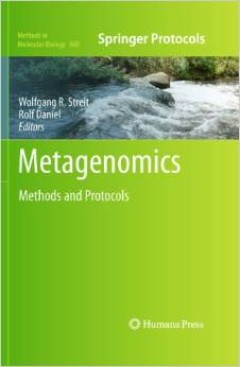
Metagenomics : methods and protocols
Metagenomics has proven to be a powerful tool for exploring the ecology, metabolic profiling, and comparison of complex microbial communities as well as its important applications in the mining of metagenomes for genes encoding novel biocatalysts and drug molecules for bioindustries. In Metagenomics: Methods and Protocols, expert researches provide an overview and introduction to basic methods …
- Edition
- -
- ISBN/ISSN
- 9781607618225
- Collation
- xi, 341 p. : ill. : ind. ; 27 cm.
- Series Title
- -
- Call Number
- 572.8629 Met

Metagenomics : methods, applications and perspectives
This book discusses metagenomics' mthods, applications and perspectives
- Edition
- -
- ISBN/ISSN
- 9781611223583
- Collation
- x, 193 p. : ill. : ind. ; 26 cm.
- Series Title
- -
- Call Number
- 572.8629 Met
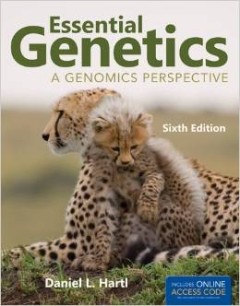
Essential genetics : a genomics perspective
Essential Genetics: A Genomics Perspective, Sixth Edition, provides an accessible, student-friendly introduction to modern genetics. Designed for the shorter, less comprehensive course, the Sixth Edition presents carefully chosen topics that provide a solid foundation to the basic understanding of gene mutation, expression, and regulation. It goes on to discuss the development and progression o…
- Edition
- 6th
- ISBN/ISSN
- 9781449686888
- Collation
- xxv, 572 p. : ill. : ind. ; 28 cm.
- Series Title
- -
- Call Number
- 572.86 Har e

A primer of genome science
Genome science has matured as a discipline to the point where it is now incorporated as a regular part of the genetics curriculum in universities. A Primer of Genome Science, Third Edition bridges the gap between standard genetics textbooks and highly specialized, technical, and advanced treatments of the subdisciplines. It provides an affordable and up-to-date introduction to the field that is…
- Edition
- 3rd edition
- ISBN/ISSN
- 9780878932368
- Collation
- xiii, 370 p. : ill. : ind. ; 24 cm.
- Series Title
- -
- Call Number
- 572.86 Gib p
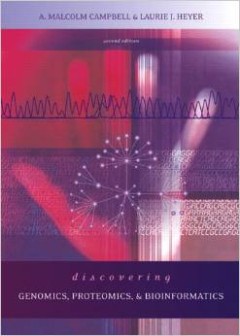
Discovering genomics, proteomics, and bioinformatics
Discovering Genomics is the first genomics text that combines web activities and case studies with a problem-solving approach to teach upper-level undergraduates and first-year graduate students the fundamentals of genomic analysis. More of a workbook than a traditional text, Discovering Genomics, Second Edition allows students to work with real genomic data in solving problems and provides the…
- Edition
- 2nd
- ISBN/ISSN
- 9780805382198
- Collation
- xv, 447 p. : ill. : ind. ; 28 cm.
- Series Title
- -
- Call Number
- 572.86 Cam d
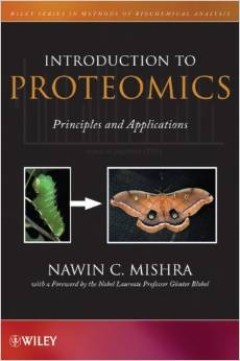
Introduction to proteomics : principles and applications
Proteomics provides an introductory insight on proteomics, discussing the basic principles of the field, how to apply specific technologies and instrumentation, and example applications in human health and diseases. With helpful study questions, this textbook presents an easy to grasp and solid overview and understanding of the principles, guidelines, and especially the complex instrumentation …
- Edition
- -
- ISBN/ISSN
- 9780471754022
- Collation
- xx, 180 p. : ill. : ind. ; 24 cm.
- Series Title
- -
- Call Number
- 572.6 Mis i
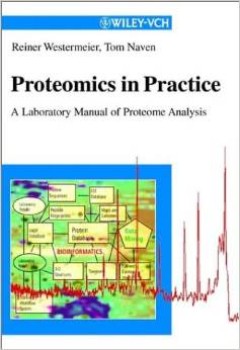
Proteomics in practice : a laboratory manual of proteome analysis
A combined review, manual and reference for the successful analysis of proteins using the classical approach of 2-D gel electrophoresis, mass spectrometry and related sequence database inquiries. The first section, written in a textbook style, introduces the entire technology, while the second section represents a comprehensive laboratory manual spanning the full range of methods from sample p…
- Edition
- -
- ISBN/ISSN
- 9783527303540
- Collation
- xxiv, 316 p. : ill. : ind. ; 25 cm.
- Series Title
- -
- Call Number
- 572.6 Wes p

Introduction to protein science : architecture, function, and genomics
Introduction to Protein Science, Second Edition, relates the study of proteins to the context of modern high-throughput data streams of genomics and proteomics. It also provides a balanced treatment of the relationship between computational and experimental methods. The text is enhanced by marginal notes, exercises, problems, and "weblems" that develop students' database and computational serve…
- Edition
- 2nd
- ISBN/ISSN
- 9780199541300
- Collation
- xix, 455 p. : ill. : ind. ; 28 cm.
- Series Title
- -
- Call Number
- 572.6 Les i

Purifying proteins for proteomics : a laboratory manual
This manual complements Simpson's Proteins and Proteomics manual, with a comprehensive collection of methods for protein purification from a variety of source preparations. The protocols are accompanied by extensive discussion of potential pitfalls and troubleshooting advice.
- Edition
- -
- ISBN/ISSN
- 9780879696962
- Collation
- xi, 801 p. : ill. : ind. ; 28 cm.
- Series Title
- -
- Call Number
- 572.6 Pur

Proteins and proteomics : a laboratory manual
Completion of sequencing of the human genome, as well as those of many other organisms, has now opened the door for exploration of the proteome, the many thousands of interacting proteins in a given organism. Critical to tackling the complexity of the proteome is a workable strategy using reliable and tested protocols for identifying, isolating, and quantifying proteins in cells and cell pathwa…
- Edition
- -
- ISBN/ISSN
- 9780879695545
- Collation
- xiii, 926 p. : ill. : ind. ; 28 cm.
- Series Title
- -
- Call Number
- 572.6 Sim p
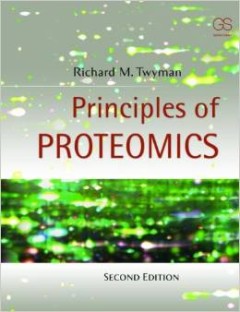
Principles of proteomics
Principles of Proteomics, Second Edition, provides a concise and user-friendly introduction to the diverse technologies used for the large-scale analysis of proteins, as well as their applications, and their impact in areas such as drug discovery, agriculture, and the fight against disease. Proteomics is a fast-advancing field in which researchers seek to capture all the proteins in the cel…
- Edition
- 2nd
- ISBN/ISSN
- 9780815344728
- Collation
- xi, 260 p. : ill. : ind. ; 28 cm.
- Series Title
- -
- Call Number
- 572.6 Twy p

Proteomics : a cold spring harbor laboratory course manual
The book is very well presented, written in a logical and concise way, and unequivocally solid in terms of scientific content, with many ready-to-use, robust procedures tested and validated over the years by recognized experts. I warmly recommend this volume to anyone who wants to implement proteomics techniques in the laboratory, or who simply wishes to get a practical sense of these technique…
- Edition
- -
- ISBN/ISSN
- 9780879697877
- Collation
- viii, 228 p. : ill. : ind. ; 28 cm.
- Series Title
- -
- Call Number
- 572.6078 Lin p

Understanding the world economy
- Edition
- -
- ISBN/ISSN
- 9780415128162
- Collation
- ix, 265 p. : ill. : ind. ; 24 cm.
- Series Title
- -
- Call Number
- 337 Cle u
- Edition
- -
- ISBN/ISSN
- 9780415128162
- Collation
- ix, 265 p. : ill. : ind. ; 24 cm.
- Series Title
- -
- Call Number
- 337 Cle u

The wealth of nations
It is symbolic that Adam Smith’s masterpiece of economic analysis, The Wealth of Nations, was first published in 1776, the same year as the Declaration of Independence. In his book, Smith fervently extolled the simple yet enlightened notion that individuals are fully capable of setting and regulating prices for their own goods and services. He argued passionately in favor of free trade, yet…
- Edition
- Bantam Classic
- ISBN/ISSN
- 9780553585971
- Collation
- 1231 p. ; 18 cm.
- Series Title
- -
- Call Number
- 330.153 Smi w
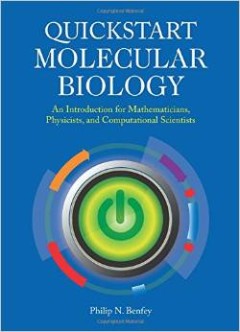
Quickstart molecular biology : an introductory course for mathematicians, phy…
As biology becomes more quantitative and computational, increasing numbers of physical scientists, mathematicians, and engineers are moving into areas such as genomics, developmental biology, neuroscience, and systems biology. The science of molecular biology underpins all these subjects, and an understanding of its fundamental concepts and the key experimental techniques used is essential. T…
- Edition
- -
- ISBN/ISSN
- 9781621820345
- Collation
- vii, 160 p. : ill. : ind. ; 24 cm
- Series Title
- -
- Call Number
- 572.8 Ben q

 Computer Science, Information & General Works
Computer Science, Information & General Works  Philosophy & Psychology
Philosophy & Psychology  Religion
Religion  Social Sciences
Social Sciences  Language
Language  Pure Science
Pure Science  Applied Sciences
Applied Sciences  Art & Recreation
Art & Recreation  Literature
Literature  History & Geography
History & Geography